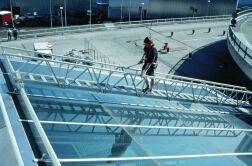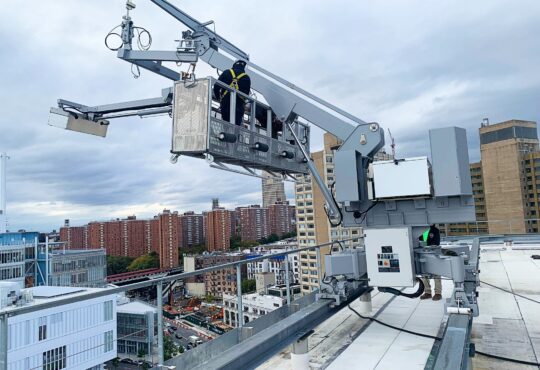
Expert Tips for Maintaining and Inspecting Traversing Ladder
Traversing ladder, such as the innovative SafeLadder, play a crucial role in facade maintenance and other high-altitude tasks. Regular maintenance and inspection are essential to ensure these ladders operate safely and efficiently. In this guide, we’ll provide expert tips for maintaining and inspecting traversing ladder to maximize their performance and lifespan.
Understanding Traversing Ladder
Traversing ladder, like the SafeLadder, are designed to move along a SafeAccess rail system, providing a secure and stable platform for working at heights. Key components include the ladder itself, the SafeAccess rail, and various trolleys that allow horizontal movement. The SafeLadder features wheels for stability and can be customized with accessories such as platforms, footrests, and telescopic sections. Understanding these components is crucial for effective maintenance and inspection.
Why Regular Maintenance is Crucial
Maintaining your traversing ladder is not just about keeping it clean; it’s essential for safety and operational efficiency. Regular maintenance helps prevent accidents caused by equipment failure, ensures that the ladder functions smoothly, and extends its service life. Adhering to a routine maintenance schedule also helps in identifying potential issues before they become major problems, ensuring that your ladder remains reliable and safe for use.
Key Maintenance Tasks for Traversing Ladder
Cleaning and Lubrication: Proper cleaning and lubrication are foundational to maintaining your traversing ladder. Regularly clean the ladder to remove debris and dirt that can affect its operation. Use a mild detergent and water for cleaning, and avoid abrasive materials that could damage the ladder. For lubrication, apply appropriate oils to moving parts to ensure smooth operation. This reduces friction and wear, contributing to the ladder’s longevity.
Inspecting the SafeAccess Rail System: The SafeAccess rail system is integral to the traversing ladder operation. Regular inspections are vital to ensure that the rail is free from damage and correctly aligned. Look for signs of wear, such as rust or deformation, and ensure that the rail is securely fixed to the building’s facade or parapet. Proper alignment and fixation are crucial for safe and efficient movement along the rail.
Checking Trolley Functionality: Trolleys are the components that facilitate horizontal movement along the facade. Regularly check both motorized and manual trolleys for functionality. Ensure that motorized trolleys are operating smoothly, and batteries are charged. For manual trolleys, ensure that they move freely and without obstruction. Address any issues promptly to avoid operational disruptions.
Inspecting Structural Integrity: Examine the structural integrity of the ladder by inspecting the frame and other components for signs of cracks, bends, or deformation. Any structural issues can compromise the ladder’s stability and safety. Addressing these issues promptly ensures that the ladder remains in good working condition and reduces the risk of accidents.
Common Issues and Troubleshooting
Common problems with traversing ladder can include wobbling, difficulty in movement, or unusual noises. If you notice any of these issues, perform a thorough inspection to identify the cause. For instance, wobbling may be due to loose components or an uneven rail. Difficulty in movement may indicate a need for lubrication or alignment adjustments. If troubleshooting does not resolve the issue, seek professional help to avoid compromising safety.
Best Practices for Safe Use
In addition to regular maintenance, following best practices for safe use is essential. Always ensure that the ladder is correctly positioned and stable before use. Provide regular training for all users to familiarize them with proper handling techniques. Adhering to safety guidelines and best practices helps prevent accidents and ensures that the ladder operates effectively.
Takeaway
Maintaining and inspecting traversing ladder is crucial for ensuring their safe and efficient operation. By following these expert tips, you can extend the life of your ladder, enhance safety, and avoid costly repairs. Regular maintenance, thorough inspections, and adherence to best practices are key to keeping your traversing ladder in top condition.









